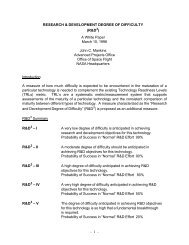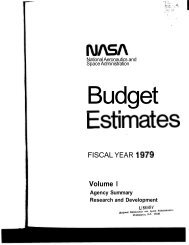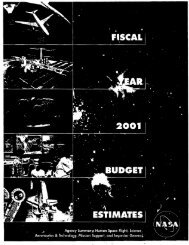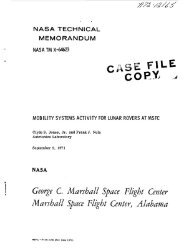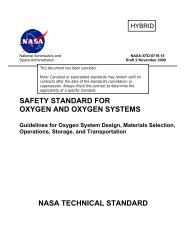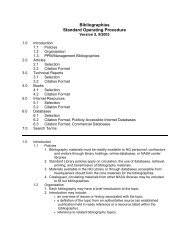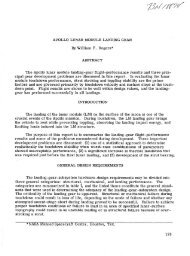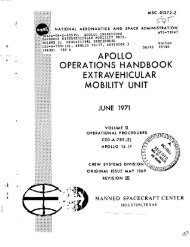crimping, interconnecting cables, harnesses, and wiring - NASA
crimping, interconnecting cables, harnesses, and wiring - NASA
crimping, interconnecting cables, harnesses, and wiring - NASA
Create successful ePaper yourself
Turn your PDF publications into a flip-book with our unique Google optimized e-Paper software.
Page 87 of 114<br />
<strong>NASA</strong>-STD-8739.4 with Change 6<br />
termination (Requirement). Splices using the crimp ferrule method may be of the end-type or<br />
parallel type. End type splices (see Figure 19-25) are used to terminate two or more conductors<br />
in a “pig-tail” configuration, <strong>and</strong> to “dead-end” a single conductor. Parallel splices (see Figure<br />
19-26) are used to dress <strong>and</strong> terminate multiple conductors, of the same or different gauges, in a<br />
parallel configuration.<br />
Figure 19-25. End Type Splice Figure 19-26. Parallel Type Splice<br />
19.13.1 Preparation. The splice is accomplished using a crimp ferrule. The type of crimp barrel<br />
to be used should be specified on the engineering documentation. For nickel-plated wire, or<br />
silver plated wire in applications above 150º C, the nickel-plated crimp barrel is recommended.<br />
Determine the size of the crimp barrel based on the manufacturer’s specifications.<br />
a. For the end type splice the wires being spliced shall be inserted into the barrel parallel to each<br />
other <strong>and</strong> all wires shall be seated against the bottom of the barrel (Requirement).<br />
b. For the parallel type splice the wires shall be inserted into the ferrule parallel to each other<br />
(Requirement). The wire ends shall be at least flush with the ends of the ferrule <strong>and</strong> shall not<br />
extend more than two wire diameters beyond the end of the ferrule (Requirement). Proper<br />
insulation spacing shall be maintained to prevent insulation from being crimped (Requirement).<br />
19.13.2 Crimping. Use the <strong>crimping</strong> tool identified in the engineering documentation or the<br />
crimp ferrule’s data sheet. Crimp <strong>and</strong> inspect per manufacturers instructions. The contact shall<br />
be deformed only by tool indenters (Requirement). Indents shall be symmetrical <strong>and</strong> centered on<br />
the crimp barrel (Requirement). There shall be no exposed base metal or other damage<br />
(Requirement).<br />
NOTE: This type of crimped connection will typically be installed with<br />
a crimp tool with 2 indenter blades instead of the normal 4<br />
indenter blades.<br />
19.14 Butt Splice<br />
The butt splice (see Figure 19-27) is one of the simplest <strong>and</strong> most often used of the crimp splices,<br />
<strong>and</strong> obtains its name from the alignment of the conductors in the crimp barrel. The crimp is






